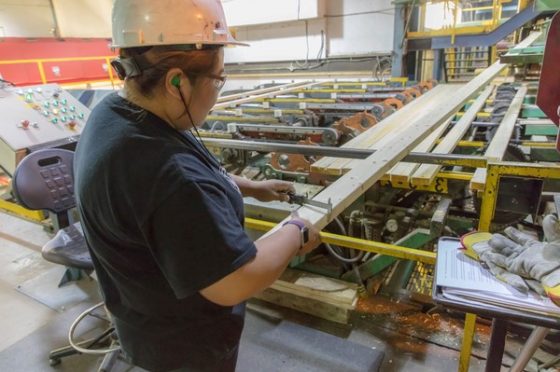B.C.’s wood product manufacturers are working together to share their experiences and find industry-wide solutions for preventing combustible dust fires.

Photo credit: © WorkSafeBC (Workers’ Compensation
Board of B.C.), used with permission
At 3 a.m. on May 11, 2020, a fire broke out in the dryer system at a pellet mill in Lavington, B.C. Thankfully, the mill’s fire suppression system activated, no one was injured, and damage was minimal in this potentially catastrophic incident. (Read more in this article in globalnews.ca.)
During the past year in B.C., there have been multiple fires at facilities that process wood products. Recently, I spoke with Mike Tasker, a WorkSafeBC safety officer, who does process safety debriefs with employers after such incidents.
“We go through the causes of an incident, what they’ve learned about it, and what we need to communicate more broadly to the overall industry,” Mike says, adding that employers with recent incidents are meeting to share their experiences.
“During the last few years, we’ve managed to build relationships between wood products companies. In the past, everybody kind of kept their gates closed. Now because everybody sees that they have a part in this catastrophic risk, they’re willing to come to the table to talk about their events. They want to educate others and work collaboratively towards industry-wide solutions.”
Combustible dust management program a must
Employers are required to develop and implement a combustible dust management program. (Read more on WorkSafeBC’s Combustible dust page.) Mike, who has inspected many mills in the past several years, says the industry has made tremendous progress, but still has work to do.
He says mills have done a good job dealing with dust that accumulates on hard-to-see places like trusses and horizontal beams of ceilings. All it takes is for one event to disturb the dust and create a dust cloud that can ignite and lead to a serious fire. (Read more about this type of fire in my post Equipping industry to combat combustible dust.)
“The mills themselves are much cleaner than ever before within the sector,” Mike says, describing how recent fires are no longer due to dust that shakes down from the rafters. Instead, fires are happening within a piece of equipment or a duct, and are started by a hard object, like a rock, causing an ignition or spark after it has found its way into the system.
Jose Barranco, a manufacturing consultation and education services manager with WorkSafeBC, says employers need to assess the risk of every process that handles combustible dust. He says: “We are supplying support for employers so we can share what we’ve learned and stay ahead of the game.”
For more information, see Risk assessment: The first step to controlling combustible dust hazards, published during Dust Safety Week 2020 in June. #DustSafetyWeek
Thanks to Mike and Jose for speaking of safety with me.


